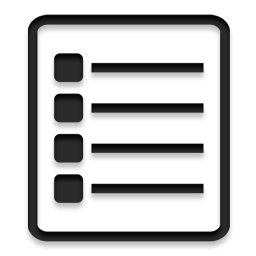 Many people have trouble identifying what they want in a job or a career, but they certainly can identify what they don’t want. In fact, my clients usually have a laundry list of complaints based on previous experiences. You might think it isn’t worthwhile to focus on this, but knowing what you don’t want is actually a great place to start developing what I call a Career Contrast List.
Many people have trouble identifying what they want in a job or a career, but they certainly can identify what they don’t want. In fact, my clients usually have a laundry list of complaints based on previous experiences. You might think it isn’t worthwhile to focus on this, but knowing what you don’t want is actually a great place to start developing what I call a Career Contrast List.
Here’s how it works:
First, ask yourself: What isn’t working at your current job and any previous jobs you’ve had? If you’re a recent grad with minimal work experience, that’s okay. Include any volunteer work you’ve done, leadership positions you’ve held, projects you’ve worked on in school. Think about the people, the work environment, and the job responsibilities or tasks you performed. Consider everything. Do a brain dump and write down whatever comes to mind on the left side of a piece of paper.
Then, once you’ve identified what you don’t like, start a contrast list to the right of this list. Jot down the opposite of each item you don’t like. This begins to define what you DO want in a job. So the list on the right side is your list of WANTS. For example, if you don’t like working on the same project on a regular basis, what would you rather have? Identify what you DO want with a statement like this: “responsibility for a variety of projects at the same time.” Or, “working with short-term projects that only last two to three months.” Next, think about anything you do like about your current job, and note those on your “want” list as well.
The notes can be about people: your boss, colleagues, or clients. It can be about the work environment: the physical space or the culture at your organization. Or maybe the tasks you perform: your daily schedule, how often you are inside or outside your office. Anything goes and the more you write, the more clarity you will have about what you really want.
There are two critical things to note about this process.
First, when you’re creating your list be as specific as possible about the things you do and don’t want. Second, be careful that you don’t become lazy when you’re writing your list of wants. Don’t just take the opposite of the things you don’t want. Instead, think about what you want and be clear about it.
For example, if you didn’t like your boss at a previous position — explain why. Don’t just write down “bad boss.” Was he not a good mentor, did she not prioritize well or communicate effectively? Explain why, and do the same when you define what you want instead. Perhaps you’d like someone who is a good mentor and is interested in your career development. Maybe you want someone who meets with you once a week to help define your priorities.
Second, whatever it is you want, write it down. Clients often tell me they think what they’re writing is unrealistic. They’re tempted to start adjusting their list early in the process. I tell them not to. We’re going for the ideal here. We’re shooting for the moon. This list is the litmus test for your dream job. There’s plenty of time to compromise later; but if you start playing small now, you’ll get even smaller in the end.
In a nutshell: Knowing what you don’t want in an ideal job, and identifying the opposite of that to determine what you do want, is a solid first step in defining your ideal career path.
We hope this information is helpful to you!
Hallie Crawford, Certified Career Coach
HallieCrawford.com was founded by certified career coach, speaker and author Hallie Crawford. Since 2002, the company’s team of certified career coaches have helped thousands of job seekers worldwide identify their ideal career path, navigate their career transition and achieve their career goals. Schedule a free consult with http://createyourcareerpath.com today to learn more about our services.



